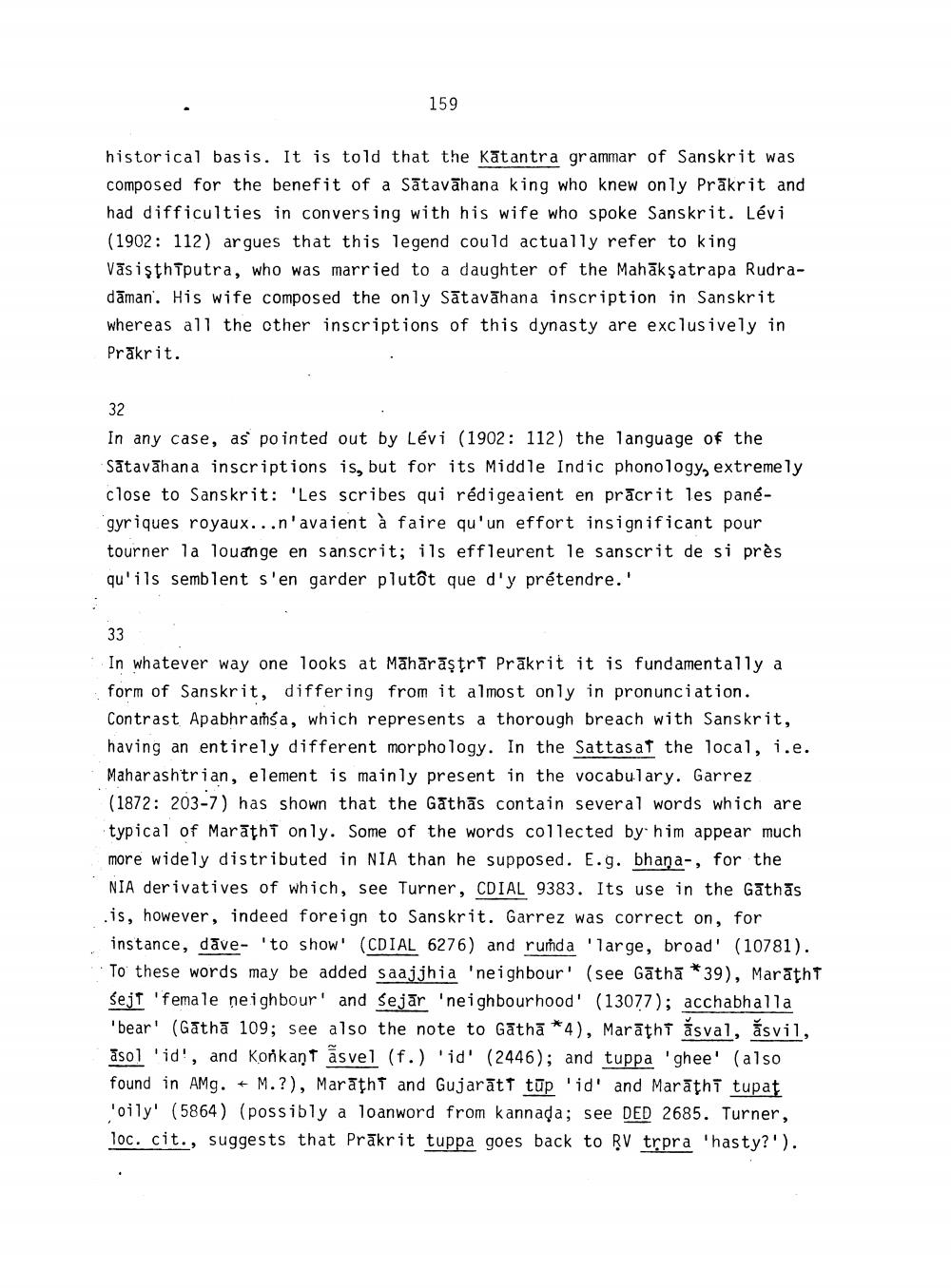________________
159
historical basis. It is told that the Kātantra grammar of Sanskrit was composed for the benefit of a Sātavāhana king who knew only Prākrit and had difficulties in conversing with his wife who spoke Sanskrit. Lévi (1902: 112) argues that this legend could actually refer to king VāsişthTputra, who was married to a daughter of the Mahākşatrapa Rudradāman'. His wife composed the only Sātavāhana inscription in Sanskrit whereas all the other inscriptions of this dynasty are exclusively in Prākrit.
32
In any case, as pointed out by Lévi (1902: 112) the language of the Sātavāhana inscriptions is, but for its Middle Indic phonology, extremely close to Sanskrit: 'Les scribes qui rédigeaient en prācrit les panégyriques royaux...n'avaient à faire qu'un effort insignificant pour tourner la louange en sanscrit; ils effleurent le sanscrit de si près qu'ils semblent s'en garder plutôt que d'y prétendre.'
33
In whatever way one looks at Māhārāştrt Prākrit it is fundamentally a form of Sanskrit, differing from it almost only in pronunciation. Contrast Apabhraća, which represents a thorough breach with Sanskrit, having an entirely different morphology. In the Sattasaf the local, i.e. Maharashtrian, element is mainly present in the vocabulary. Garrez (1872: 203-7) has shown that the Gathās contain several words which are typical of Marāthi only. Some of the words collected by him appear much more widely distributed in NIA than he supposed. E.g. bhana-, for the NIA derivatives of which, see Turner, CDIAL 9383. Its use in the Gathās .is, however, indeed foreign to Sanskrit. Garrez was correct on, for instance, dāve- 'to show' (CDIAL 6276) and rumda 'large, broad' (10781). To these words may be added saajjhia 'neighbour' (see Gātha *39), Marathi sejf 'female neighbour' and sejār 'neighbourhood' (13077); acchabhalla 'bear' (Gathā 109; see also the note to Gatha *4), Marāțht ăsval, ăsvil, asol 'id', and Konkant āsvel (f.) 'id' (2446); and tuppa 'ghee' (also found in AMg. + M.?), Marāght and Gujarātī tūp 'id' and Marāthi tupat 'oily' (5864) (possibly a loanword from kannada; see DED 2685. Turner, loc. cit., suggests that Prākrit tuppa goes back to RV trpra 'hasty?').




